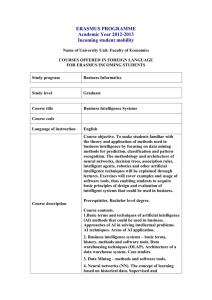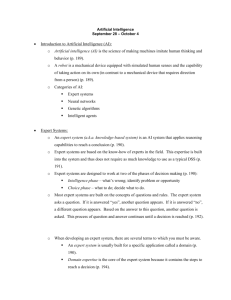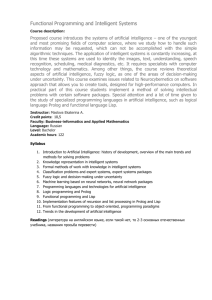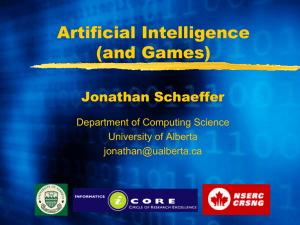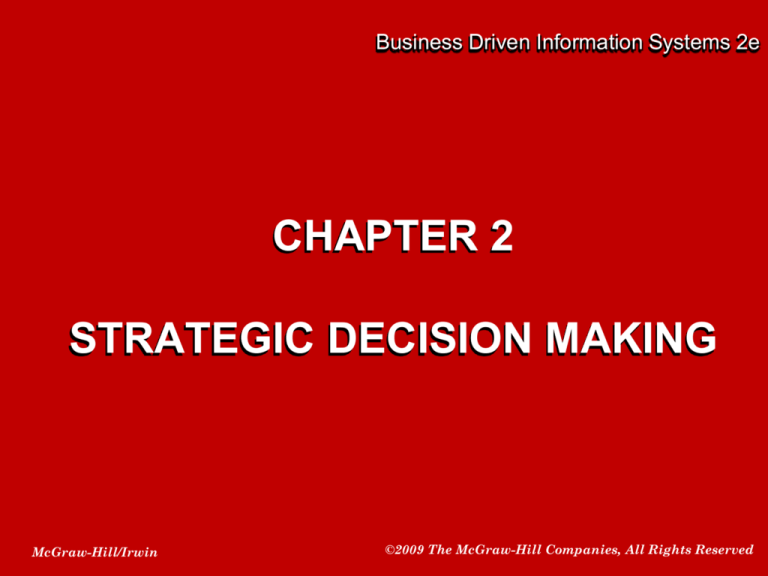
Business Driven Information Systems 2e
CHAPTER 2
STRATEGIC DECISION MAKING
McGraw-Hill/Irwin
©2009 The McGraw-Hill Companies, All Rights Reserved
2-2
Sear’s Catalog
• Sears Roebuck changed the shape of an entire industry
by being lucky enough to discover a huge untapped
market that lay waiting to be discovered.
• In the 1880s about 65 percent of the population (58
million) lived in the rural areas. Richard Sears lived in
North Redwood, Minnesota, where he was an agent at
the Minneapolis and St. Louis railway station. Sears
began trading products such as lumber, coal, and
watches, when the trains would pass through.
• Sears moved to Chicago in 1893 and partnered with
Alvah C. Roebuck, and the Sears & Roebuck company
was born. The company first published a 32 page
catalog selling watches and jewelry. By 1895 the
catalog was 532 pages long and included everything
from fishing tackle to glassware. In 1893 sales reached
$400,000 and by 1895 sales topped $750,000.
2-3
Sear’s Catalog
• Sears invented many new marketing campaigns and
concepts that are still in use today, including a series of
rewards (or loyalty programs) for customers who passed
copies of the catalog on to friends and relatives.
• Sears was one of the first companies to recognize the
importance of building strong customer relationships.
Sears’ loyalty program gave each customer 24 copies of
the catalog to distribute, and the customer would
generate points each time an order was placed from
one of the catalogs by a new customer.
• The Sears catalog became a marketing classic. It
brought the world to the isolated farms and was a feast
for the new consumers. The entire world was available
through the Sears catalog, and it could be delivered to
the remotest of doorsteps.
2-4
What’s In A Name? A Lot!
•
•
•
•
•
•
Sunday, November 18, 1928, is a historic moment in time since it is the day that
the premier of Steamboat Willie debuted, a cinematic epic of seven minutes in
length. This was the first cartoon that synchronized sound and action.
Like all great inventions, Mickey Mouse began his life in a garage.
After going bankrupt with the failure of his Laugh O Gram Company, Walt
Disney decided to rent a camera, assemble an animation stand, and set up a
studio in his uncle’s garage. At the age of 21, Walt and his older brother Roy
launched the Disney Company in 1923.
Their first few films failed and it wasn’t until 1928 when they released a seven
minute film about a small mouse named Mickey. Disney never looked back.
The truth is Mickey Mouse began life as Mortimer Mouse. Walt Disney’s wife,
Lilly, did not like the name and suggested Mickey instead. Walt Disney has
often been heard to say “I hope we never lose sight of one fact – that this was all
started by a mouse.”
Would Mortimer have been as successful as Mickey? Would Mortimer have
been more successful than Mickey? How could Walt Disney have used
technology to help support his all-important decision to name his primary
character? There are many new technologies helping to drive decision support
systems, however it is important to note that some decisions, such as the name
of a mouse, are made by the most complex decision support system available,
the human brain.
2-5
The Harley-Davidson Mystique
• They have been ranked 1st in Fortune’s 5 Most Admired
Companies the motor vehicle industry, 2nd in
ComputerWorld’s Top 100 Best Places to Work in IT and 1st
in the Top 10 Sincerest Corporations in the Harris
Interactive Report
• HD’s technology budget is more than 2% of its revenue, far
above the industry average. More than 50% of the budget is
devoted to developing new technologies – information
sharing, business intelligence and enhancing decision
making. It has reduced operating costs by $40 million
through using strategic information systems
• Talon, it’s proprietary dealer management system handles
inventory, vehicle registration, warranties and POS
transactions for all dealerships. The system checks dealer
inventory, generates parts orders and analyzes global
organization information.
2-6
The Harley-Davidson Mystique
• HD uses software from Manugistics to enable the
company to so business with suppliers in a
collaborative, Web-based environment. It also has
SCM software to manage material flows and
improve collaboration with key suppliers.
• They CRM to build relationships and loyalty with
their customers and the Harley’s Owners Group
(HOG – over 600,000 members) offers events and
benefits to its members.
• The corporate culture led to its winning the awards
for best place to work and most admired company.
2-7
DECISION MAKING
• Decisionenabling,
problemsolving, and
opportunityseizing
systems
2-8
DECISION MAKING
• Reasons for the growth of decision-making
information systems
– People need to analyze large amounts of
information
– People must make decisions quickly
– People must apply sophisticated analysis
techniques, such as modeling and forecasting, to
make good decisions
– People must protect the corporate asset of
organizational information
2-9
DECISION MAKING
• Model – a simplified representation or
abstraction of reality
• IT systems in
an enterprise
2-10
TRANSACTION PROCESSING
SYSTEMS
• Moving up through the organizational pyramid users move
from requiring transactional information to analytical
information
2-11
TRANSACTION PROCESSING
SYSTEMS
• Transaction processing system (TPS) - the basic business
system that serves the operational level (analysts) in an
organization
–
–
–
–
–
Payroll system
Accounts Payable system
Accounts Receivable system
Course registration system
Human resources systems
• Online transaction processing (OLTP) – the capturing of
transaction and event information using technology to (1)
process the information according to defined business rules,
(2) store the information, (3) update existing information to
reflect the new information
• Online analytical processing (OLAP) – the manipulation of
information to create business intelligence in support of
strategic decision making
2-12
DECISION SUPPORT SYSTEMS
• Decision support system (DSS) – models
information to support managers and business
professionals during the decision-making process
–
–
One national insurance company using a DSS discovered
that only 3% of married male homeowners in their forties
received more than one DUI. The company lowered rates
for customers in this category, which increased its revenue
while mitigating its risk.
Burlington Northern and Santa Fe Railroad (BNSF)
regularly tests its railroad tracks. Each year hundreds of
train derailments result from defective tracks. Using a DSS
to schedule train track replacements helped BNSF
decrease its rail-caused derailments by 33%
2-13
DECISION SUPPORT SYSTEMS
• Three quantitative models used by DSSs
include:
1. Sensitivity analysis – the study of the impact
that changes in one (or more) parts of the
model have on other parts of the model
2. What-if analysis – checks the impact of a
change in an assumption on the proposed
solution
3. Goal-seeking analysis – finds the inputs
necessary to achieve a goal such as a
desired level of output
2-14
DECISION SUPPORT SYSTEMS
• What-if analysis
Excel’s Scenario Manager
being used to determine
what will happen to total
sales as the price and
quantity of units sold
changes
2-15
DECISION SUPPORT SYSTEMS
• Goal-seeking analysis
Excel’s Goal Seek tool
being used to determine
how much money a
person can borrow with
an interest rate of 5.5%
and a monthly payment of
$1,300
2-16
Goal Seek Example
A salesperson participates in a bonus program that pays 3%
of all sales dollars.The salesperson wants to receive a
bonus of $2,500. What is the target amount of sales dollars
needed to reach that goal?
Put the correct formula in C5 for the computation of Bonus
Amount
Fix Bonus Amount to $2,500 and vary Sales Dollars until that
bonus amount is reached
Sales Dollars
Bonus Percentage
Bonus Amount
Click on Tools->Goal Seek
Set Cell ->C5 To Value 2500 By Changing Cell->C3
$1,000.00
3%
$30.00
2-17
DECISION SUPPORT SYSTEMS
• Interaction between a TPS and a DSS
2-18
EXECUTIVE INFORMATION SYSTEMS
•
Executive information system (EIS) – a
specialized DSS that supports senior level
executives within the organization
•
Most EISs offering the following capabilities:
– Consolidation – involves the aggregation of
information and features simple roll-ups to complex
groupings of interrelated information
– Drill-down – enables users to get details, and
details of details, of information
– Slice-and-dice – looks at information from different
perspectives
2-19
EXECUTIVE INFORMATION SYSTEMS
• Interaction between a TPS and an EIS
2-20
Digital Dashboards
•
•
Integrates information from multiple components and
presents it in a unified display
Executives can perform their own analysis, without
inundating IT personnel with queries and request for
reports, and quickly get results to respond to opportunities
2-21
Digital Dashboards
• DDs commonly use indicators to help
executives quickly identify the status of
key information or critical success
factors
• DDs help executives react to
information as it becomes available and
make decisions, solve problems and
change strategies daily instead of
monthly
2-22
Digital Dashboards
• Why, according to Nucleus Research, is there a direct correlation
between use of digital dashboards and a company’s return on
investment (ROI)?
– Digital dashboards, whether basic or comprehensive, deliver results
quickly
– The quicker employees have information, the quicker they can
respond to problems, threats, and opportunities
•
Verizon Communications CIO Shaygan Kheradpir tracks 100
plus major IT systems on a single screen called “The Wall of
Shaygan”
–
–
Every 15 seconds a new set of charts communicating Verizon’s
performance flashes onto a giant LCD screen in his officeand
include 300 measures of business performance that fall into 3
categories – Market Pulse, Customer Service and Cost Driver
400 managers at every level of Verizon have the same dashboard
2-23
Artificial Intelligence
• Intelligent system – various commercial
applications of artificial intelligence
• Artificial intelligence (AI) – simulates
human intelligence such as the ability to
reason and learn
– AI systems can learn or understand from
experience, make sense of ambiguous or
contradictory information and even use
reasoning to solve problems and make
decisions effectively
2-24
Artificial Intelligence
•
•
The AI Robot Cleaner at Manchester Airport in
England alerts passengers to security and
nonsmoking rules while it scrubs up to 65,600
square feet of floor per day
SmartPump keeps drivers in their cars on cold,
wet days
– The SmartPump can service any automobile built
after 1987 that has been fitted with a special gas cap
and a windshield-mounted transponder that tells the
robot where to insert the pump
•
The Miami Police Bomb squad’s AI robot that is
used to locate and deactivate bombs
2-25
Artificial Intelligence
• The ultimate goal of AI is the ability to build a
system that can mimic human intelligence
2-26
Artificial Intelligence
•
•
•
RivalWatch (ql2.com) offers a strategic
business information service using AI that
enables organizations to track the product
offerings, pricing policies, and promotions of
online competitors
Clients can determine the competitors they
want to watch and the specific information they
wish to gather, ranging from products added,
removed, or out of stock to price changes,
coupons offered, and special shipping terms
RivalWatch allows its clients to check each
competitor, category, and product either daily,
weekly, monthly, or quarterly
2-27
Artificial Intelligence
•
Four most common categories of AI include:
1. Expert system – computerized advisory programs that
imitate the reasoning processes of experts in solving
difficult problems
•
•
•
Human expertise is transferred to the expert system, and users
can access the expert system for specific advice
Most expert systems contain information from many human
experts and can therefore perform a better analysis than any
single human
MYCIN - outperformed members of the Stanford medical school
but not used because of ethical and legal issues related to the
use of computers in medicine
http://www.macs.hw.ac.uk/~alison/ai3notes/section2_5_5.htm
2-28
Artificial Intelligence
•
Four most common categories of AI include:
1. Expert system – computerized advisory programs that
imitate the reasoning processes of experts in solving
difficult problems
•
•
•
Human expertise is transferred to the expert system, and users
can access the expert system for specific advice
Most expert systems contain information from many human
experts and can therefore perform a better analysis than any
single human
MYCIN - outperformed members of the Stanford medical school
but not used because of ethical and legal issues related to the
use of computers in medicine
http://www.macs.hw.ac.uk/~alison/ai3notes/section2_5_5.htm
2-29
Artificial Intelligence
•
Countrywide Funding Corp uses an expert system
to improve decisions about granting loans using a
PC based system that makes preliminary
creditworthiness decisions on loan requests
– The systems has about 400 rules. It tested the system
against an actual underwriter and refined the system until
it agreed with the underwriter 95% of the time
– All rejected loans are reviewed by an underwriter
– An underwriter can now evaluate at least 16 loans per
day as compared to 6 or 7 previously
– The system is being used on their Web site to help
customers who are inquiring is they qualify for a loan
2-30
Artificial Intelligence
•
Galeria Kaufhof, a German superstore chain, uses
a rule-based system to help inspect the quality of
the 12,000 daily deliveries they receive of a wide
range of goods
– The system identifies high-risk deliveries (suppliers with
poor delivery history, new products) for inspection and
passes along the lower risk ones automatically
•
Successful expert systems deal with problems of
classification in which there are relatively few
alternative outcomes and in which the possible
outcomes are all known in advance
2-31
Traffic Light Expert System
2-32
Traffic Light Expert System
Is the light green (Yes/No)? No
Is the light red (Yes/No)? No
Is the light likely to change to red before you get
through the intersection (Yes/No)? Why?
Will only reach this point if light is yellow and
then you’ll have two choices.
Is the light likely to change to red before you get
through the intersection (Yes/No)? No
Conclusion: Go through the intersection
2-33
Loan Application Expert System
2-34
Artificial Intelligence
2. Neural Network – attempts to emulate the
way the human brain works
•
Neural networks are most useful for decisions that
involve patterns or image recognition
– Used for solving complex, poorly understood problems for
which large amounts of data have been collected
– Typically used in the finance industry to discover credit
card fraud by analyzing individual spending behavior
– US Bancorp has cut credit card fraud by 70% using this
technology
2-35
Neural Networks
• Neural nets consist of an input layer, output layer
and one or mode hidden internal layers
– Input and output layers are connected to the
middle layers by “weights” of various strengths
– Weights change as the net learns what is good
and bad (e.g. credit card transaction) and
stabilize after having been fed enough examples
– Differs from expert system in that expert system
follows rigid rules that don’t change. Neural net
rules change based on experience/learning.
2-36
Neurons and Synapses
2-37
Neural Networks
–
–
–
A neural network is composed of several different
elements. Neurons are the most basic unit and are
interconnected. Each connection has a connection
weight which may differ from other connections.
A neuron is a communication conduit that accepts
input and produces output. The neuron receives its
input either from other neurons or the user program.
Similarly, the neuron sends its output to other
neurons or the user program.
When a neuron produces output, that neuron is said
to activate, or fire. A neuron will activate when the
sum of its inputs satisfies the neuron’s activation
function. The user decides what the trigger level will
be.
2-38
The Layers of a Neural Network
2-39
Neural Networks Can…
• Learn and adjust to new circumstances on
their own
• Take part in massive parallel processing
• Function without complete information
• Cope with huge volumes of information
• Analyze nonlinear relationships
2-40
Artificial Intelligence
•
Fuzzy logic – a mathematical method of handling
imprecise or subjective information
– Values for ambiguous information range between 0 and 1.
A washing machine continues to wash until the clothes are
clean. How do you define clean? Analyze financial
information that has a subjective value (goodwill).
– Fuzzy logic and NNs are often combined to express
complicated and subjective concepts
•
•
In Japan, the subway system uses fuzzy logic controls to
accelerate so smoothly that standing passengers need not
hold on
A system has been developed to detect possible fraud in
medical claims submitted by healthcare providers
2-41
Artificial Intelligence
•
Fuzzy logic can be used in a computer program to
automatically control room temperature
– Cool is between 50-70 degress, although 60-67 is most clearly
cool. Cool is overlapped by cold and norm.
– Thus a rule might be “if the temperature is cool or cold and the
humidity is low while the outdoor wind is high and the outdoor
temperature is low, raise the heat and humidity in the room”
2-42
***Genetic Algorithms
3. Genetic algorithm – an artificial intelligent
system that mimics the evolutionary, survival-ofthe-fittest process to generate increasingly
better solutions to a problem
• Essentially an optimizing system, it finds the
combination of inputs that give the best
outputs
2-43
***Genetic Algorithms
•
Take thousands or even millions of possible solutions,
combine and recombine them until the optimal solution
is found
–
Example: Create a portfolio of 20 stocks with growth rate
of 7.5%
•
•
Pick a large group of stocks, combine them into groups of 20
at a time and see how each group performed based on
historic information
30 stocks 30 million combinations, 40 stocks 137
billion possibilities of 20
– US West uses this technique to determine the optimal
configuration of fiber-optic cable in a network that may
include as many as 100,000 connection points
– Used to take 2 months for an experienced designer, now
2 days and saves $1-$10 million each time it’s used
2-44
Evolutionary Principles of Genetic Algorithms
•
According to evolutionary theory, Mother
Nature is often confronted with the problem of
evolving species to fit their environment.
1.
Selection – good specimens reproduce more
often, weak specimens less often or not at all
2.
3.
Crossover – combining portion of good
outcomes to create even better outcomes
Mutation – occasionally, a child is born with a
new characteristic
2-45
The basic genetic algorithm
• Start with a large “population” of randomly generated
“attempted solutions” to a problem
• Repeatedly do the following:
– Evaluate each of the attempted solutions
– Keep a subset of these solutions (the “best” ones)
– Use these solutions to generate a new population
• Quit when you have a satisfactory solution (or you run
out of time)
2-46
Genetic Algorithms
• Consider the problem of finding a "best" stock portfolio.
The steps of the genetic algorithm are listed below:
– Step 1 From the list of NASDAQ stocks, generate several
portfolios of randomly chosen stocks.
– Step 2 Evaluate each of the portfolios, assigning it a score.
– Step 3 If a portal has a high score, make several "clones"
(copies) of it. If it has a low score, get rid of it.
– Step 4 Recombine the portfolios. Choose several pairs of
portfolios and mix and match their stocks.
– Step 5 Mutate a few of the portfolios by randomly adding or
removing a small number of stocks.
– Repeat steps 2-5 above many, many times to weed out weak
portfolios and find the "best" portfolios.
2-47
Genetic Algorithms
• First, we randomly generate several portfolios:
• Next, we assign a score to each portfolio using such
criteria as:
– Best average monthly percentage price gain (for low risk, high
gain portfolios)
– Best average annual percentage gain
– Best annual market capitalization gain
2-48
Genetic Algorithms
• After scoring, we perform selection on the portfolios,
deciding how many "child" portfolios that portfolio will
"create" based on its score.
• Since Portfolio 4 had a high score (90), it will "reproduce"
twice (have two children or clones) in the next round.
Since potrfolio 1 had the lowest score, it will not appear in
the next round.
2-49
Genetic Algorithms
• For the Recombine phase, we swap two stocks
between Portfolio 2 and Portfolio 4 (stock G for
stock Q and stock H for stock T).
2-50
Genetic Algorithms
• Then, we mutate one of the stocks in one of the
portfolios (stock T is randomly replaced with stock Z)
• Then, we repeat the above process of scoring, selection,
recombination, and mutation many thousands (or
millions) of times until we are left with a set of optimum
portfolios.
2-51
Genetic Algorithm Applications
• GE used them help optimize the design of
a jet turbine aircraft engine
• SCM software from i2 Technologies
optimizes production-scheduling models
incorporating hundreds of thousands of
details about customer orders, material
and resource availability, manufacturing
and distribution capability and delivery
dates
2-52
Intelligent Agents
4.
Intelligent agent – special-purposed knowledge-based
information system that accomplishes specific tasks on
behalf of its users
•
•
•
–
–
–
–
Used for environmental scanning and competitive intelligence
An intelligent agent can learn the types of competitor
information users want to track, continuously scan the Web
for it, and alert users when a significant event occurs
software that assists you, or acts on your behalf, in
performing repetitive computer-related tasks (e.g., paper clip
in Word)
Buyer agents or shopping bots
User or personal agents
Monitoring-and surveillance agents
Data-mining agents
2-53
Deep Space 1
Launched:
Oct 24, 1998
Terminated:
Dec. 18, 2001
Out of this World
Agents
Successfully tested
12 high-risk,
advanced space
technologies
including
AUTONOMOUS
OPERATIONS SYSTEM
where a s/w "agent"
plans, make decisions,
and operate by itself..
The agent also knows
when a failure has
occurred, what to do
about it, and when to call
for help.
2-54
DARPA Grand Challenge
• Prize competition for fully autonomous driverless vehicles
– 2004 Challenge: Mojave Desert
• None of the robot vehicles finished the route. Carnegie Mellon’s Red
Team traveled the farthest distance, completing 7.36 miles of the 150
mile course.
– 2005 Challenge: Mojave Desert
• 5 vehicles completed the race, although difficult the 2004 route had
some more challenging areas. Winner took about 7 hours.
http://www.youtube.com/watch?v=M2AcMnfzpNg
– 2007 Challenge: closed AFB in California
• 60 mile urban area to be completed in less than 6 hours. Rules
included obeying all traffic regulations while negotiating with other
traffic and obstacles and merging into traffic. 6 winners, 1st place took
about 4 hours and won $2 million
http://www.youtube.com/watch?v=lULl63ERek0&feature=fvw
2-55
Agents Sense & Respond
An agent receives input from its environment
and, through a repertoire of actions available
to it, reacts to it in order to modify it.
sensory input
effector output
Environment
2-56
Buyer Agents
• Buyer agent or shopping bot – an
intelligent agent on a Web sites that helps
you, the customer, find products and
services you want
– When you log on to Amazon.com, you are
presented with suggestions of things to
purchase based on previous activity at the
website (uses collaborative filtering)
2-57
User Agents
• User agent or personal agent –
intelligent agent that takes action on your
behalf
• Examples:
– Prioritize e-mail and alert you when important
items arrive
– Act as gaming partner
– Assemble customized news reports (CNN)
– Fill out forms for you
– Negotiate deals with suppliers and
distributors
2-58
Monitoring-and-Surveillance Agents
• Monitoring-and-surveillance
(predictive) agents – intelligent agents
that observe and report on equipment.
– Deep Space 1
– Network monitoring – predict crash 45
minutes in advance (also uses neural
network to look for patterns of activity or
problems)
2-59
Multi-Agent Systems
Agent Based Modeling
• A way of simulating human organizations using
multiple intelligent agents, each of which follows
a set of simple rules and can adapt to changing
conditions
– BIOMIMICRY - by observing parts of the ecosystem,
like ant or bee colonies, AI scientists can use h/w and
s/w models that incorporate insect behavior to
• Learn how people-based systems behave
• Predict how they will behave under a set of
circumstances
• Improve human systems to make them more efficient
and effective
2-60
Multi-Agent Systems
Agent Based Modeling
• Some examples of how Agent based modeling
systems are used include:
– Modeling stock market fluctuations
– Predicting the escape routes that people seek in a
burning building
– Estimate the effects of interest rates on consumers with
different types of debt
– Southwest Airlines to optimize cargo routing
– P&G to overhaul its supply network of 5 billion customers
in 140 countries
– Merck to find more efficient ways of distributing anti-AIDS
drugs in Africa
2-61
Data-Mining Agents
• Data-mining agent – operates in a data
warehouse discovering information
– Used in conjunction with neural networks to
classify data
– Detect a major shift in a trend or indicator or
the presence of new information
• Volkswagen tracks market conditions to predict
changes in consumer purchasing or payments
and proactively take steps to protect themsleves
2-62
Data-Mining Agents
• Data-mining systems sift rapidly through
information to uncover patterns and
relationships
– Data-mining systems include many forms of AI such
as neural networks and expert systems
• Data-mining tools apply algorithms to
information sets to uncover inherent trends and
patterns in the information
– Analysts use this information to develop new
business strategies and business solutions
2-63
Intelligent Agents in Practice
• Proctor & Gamble use IA technology to
make their supply chain network more
efficient
– The network models a complex supply chain
as semiautonomous “agents” representing
individual supply chain components such as
production facilities, distributors and retail
stores
– The behavior of each agent is programmed to
follow rules that mimic actual behavior such
as “order an item when it is out of stock”
2-64
Intelligent Agents in Practice
– Using IAs, P&G discovered that trucks should
be dispatched before being fully loaded
• Although transportation costs would be higher,
retail store stockouts would occur less often, thus
reducing the amount of lost sales which would
more than make up for the higher distribution
costs
• These models saved P&G $300 million annually
on an investment of less than 1% of that amount
2-65
Intelligent Agents in Practice



